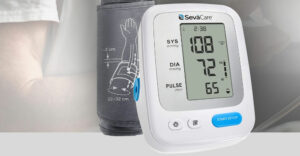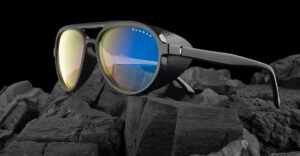
Robotic surgery is a rapidly growing field that has the potential to change the way we think abouthealthcare for so-called “remote” communities, from the ocean depths to outer space.
This developing medical technology field employsrobots to hold the instruments while a surgeon operates a console to manipulate video-game-like controls. The robot typically includes robotic arms that hold miniature cameras and surgical tools to do all of the things a surgeon normally does directly — but with much more precision and in much smaller areas. With such a system, the surgeon may never actually touch the patient.
The surgeon’s console is usually a few feet away from the patient; however, in the future, the doctor and patient could be separated by a vast distance.
Futuristic Treatment
Dr. Dave Williams of the Canadian Space Agency tested this idea in April when he took part in NEEMO, or NASA Extreme Environment Mission Operations. The program tested robotic surgery precedures taking place 62 feet below the ocean surface — 3.5 miles off the coast of Key Largo in the Florida Keys National Marine Sanctuary, a marine habitat about the same size as the service module of the International Space Station.
Williams, also an astronaut, is scheduled to travel on the space shuttle in May 2007. His mission will include up to three spacewalks. Although NASA has no plans to test robotic surgery on any of the next few shuttle missions, Williams would like to see it done one day in the future. NASA has performed standard open surgery on animals in space.
Canada, in particular, is invested in robotic surgery, specifically telesurgery, because of the country’s vast land mass, which includes many remote rural communities. “Depending upon where you are on Earth, there’s a difference in the level of healthcare that exists — in many cases, just due to the geographic isolation of the area that you’re in,” Williams told TechNewsWorld.
Telesurgery uses satellites to relay the signals needed to connect the surgeon’s console to the robot, which means a surgeon could feasibly operate on a patient located just about anywhere those signals could be received. For right now, robotic surgery is limited to the traditional setting of a hospital operating room. It’s gaining widespread acceptance for certain procedures, particularly prostatectomies, in which the entire prostate is removed.
When Samuel Morley was diagnosed with prostate cancer in February 2004, for instance, doctors presented him with several options. One of those options was to do nothing, he was told, because prostate cancer is a slow-growing cancer. He could also implant radioactive seeds in the hope they would kill the cancer, undergo standard open surgery, or try robotic surgery.
Less Invasive
He decided to have the robotic surgery, because “it’s not nearly as invasive. The surgeon can see a lot better what’s doing inside the body,” he said. Open prostatectomy, on the other hand, is a deep and bloody surgery, where “often by mistake, nerves are cut, [or] the ureter is cut, which can cause incontinence,” he said.
With robotic surgery, there is a lot less bleeding, the 3D cameras can see a lot further into the dark recesses of the open cavity, and the cuts can be made with much greater precision.
Morley, a 72-year-old economist, was operated on by Dr. Jason Engel, director of robotic urologic surgery and vice chair of the department of urology at George Washington University Hospital in Washington, D.C. Engel has performed over 300 prostatectomies using the da Vinci surgical system developed by Intuitive Surgical (Nasdaq: ISRG). Engel is a big advocate of the technique.
He prefers it over open surgery for prostatectomies, which have become the most common robotic surgical application, because their clinical outcome is clearly superior to that of standard open surgery.
While robotic surgery results in less pain, less bleeding and offers a faster recovery time, that’s not the main reason doctors use it. The clinical differences result in a smaller chance of incontinence and erectile dysfunction. “We can try to get [the patient’s] life back as close to what it was before — that’s the real purpose of the exactness and the preciseness of it,” Dr. Engel said.
The biggest problem with robotic surgery at the moment is the cost — not so much the cost to purchase the system, which is approximately US$1.5 million for the da Vinci, but rather cost per use for the doctors and their patients. Health insurers typically reimburse patients for the same amount whether he or she chooses open or robotic surgery. So far, hospitals have been picking up the difference in costs in order to get their staff trained on the systems.
As the field is relatively new, few vendors currently sell robotic surgical systems, so hospitals have few choices if they are interested in purchasing the equipment. Intuitive Surgical is one. Also, MacDonald Dettwiler and Associates makes a robotic surgery system known as the “neuroArm,” designed for use in intra-cranial and spinal surgery. This system was developed in collaboration with the University of Calgary/Foothills Hospital in Calgary, Alberta.
Not Always Appropriate
Meanwhile, robotic surgery can provide many advantages for certain conditions, but as yet it’s not the preferred surgical treatment for all health issues.
The technique is used in some heart surgeries, lung surgeries, and for a few other treatments, but it isn’t compatible with all types of surgery. “It really is only a useful tool where you need it, such as places where you really have sort of a technical dissection with the nerves, or places where you have a lot of reconstruction and sewing,” Engel noted. “If you’re just removing an organ like a kidney, I don’t use it for that. It’s not necessary for that.”
As physicians become more familiar with the systems’ advantages, drawbacks and overall capabilities, robots may become more prevalent in the operating room. For now, healthcare professionals see the need for more research and experimentation. “We need to understand what tasks a robot can do really well and what tasks a human can do really well,” said Dr. Williams.





















































